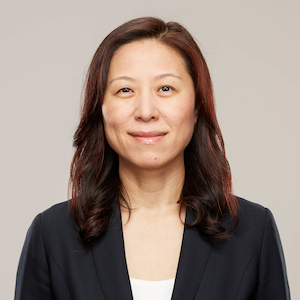
Li Feng
Partner
Finnegan
is a Partner at Finnegan who focuses her practice on patent litigation before U.S. district courts, post-grant proceedings before the Patent Trial and Appeal Board (PTAB) of the U.S. Patent and Trademark Office (USPTO), patent prosecution, opinions and counseling, and due diligence. Her technical experience spans a broad range of technologies, including pharmaceutical, biotechnology, medical device, chemical, agriculture, nanotechnology, cosmetic, and metallurgy. Dr. Feng has represented a number of pharmaceutical companies in Abbreviated New Drug Application (ANDA) litigation, conducting analysis and developing validity, infringement, and enforcement positions. She also frequently speaks on intellectual property topics.
For more information, or to contact Dr. Feng, please visit her Firm Profile Page

Recent Articles by Li Feng
The Amgen v. Sanofi decision put most functional antibody claims into question, including epitope and competitive binding claims, as well as antibody claims based on a newly characterized antigen. After Amgen v. Sanofi, non-sequence based antibody claims may become more difficult to obtain before the USPTO from a written description standpoint. Yet, to fully protect the essence of the invention and avoid design-arounds, such claims are extremely valuable to patent owners. To obtain antibody genus claims beyond those defined by sequences, the patent applicant will need to make and test a sufficient number of representative antibodies across the claimed genus, or establish a clear structure/function relationship among the members of the genus. Patent applicants should carefully assess the amount of data they have acquired, in comparison to the scope of claims that they wish to obtain, before rushing to the Patent Office.
This article analyzes obviousness issues related to antibody patents at the Patent Trials and Appeal Board (PTAB) and in federal courts. We review several cases categorized by type of claims in search of trends on what types of antibody-related claims are more likely to survive an obviousness challenge… These cases are highly fact-specific, but a few broad observations may be made. To our knowledge, no claims directed to an antibody claimed purely by structure have been challenged, except for those of an ADC (KADCYLA®), where both the antibody part and the drug part of the conjugate were previously known. An antibody broadly claimed by function may be considered obvious “[i]f any one method of achieving any single embodiment [of such claim] would have caused a person of ordinary skill in the art to anticipate success.” Abbott GMBH, 971 F. Supp.2d at 186. Objective indicia of nonobviousness have been helpful, but only where there was a clear nexus between the objective evidence and the claims.

![[IPWatchdog Logo]](https://ipwatchdog.com/wp-content/themes/IPWatchdog%20-%202023/assets/images/temp/logo-small@2x.png)